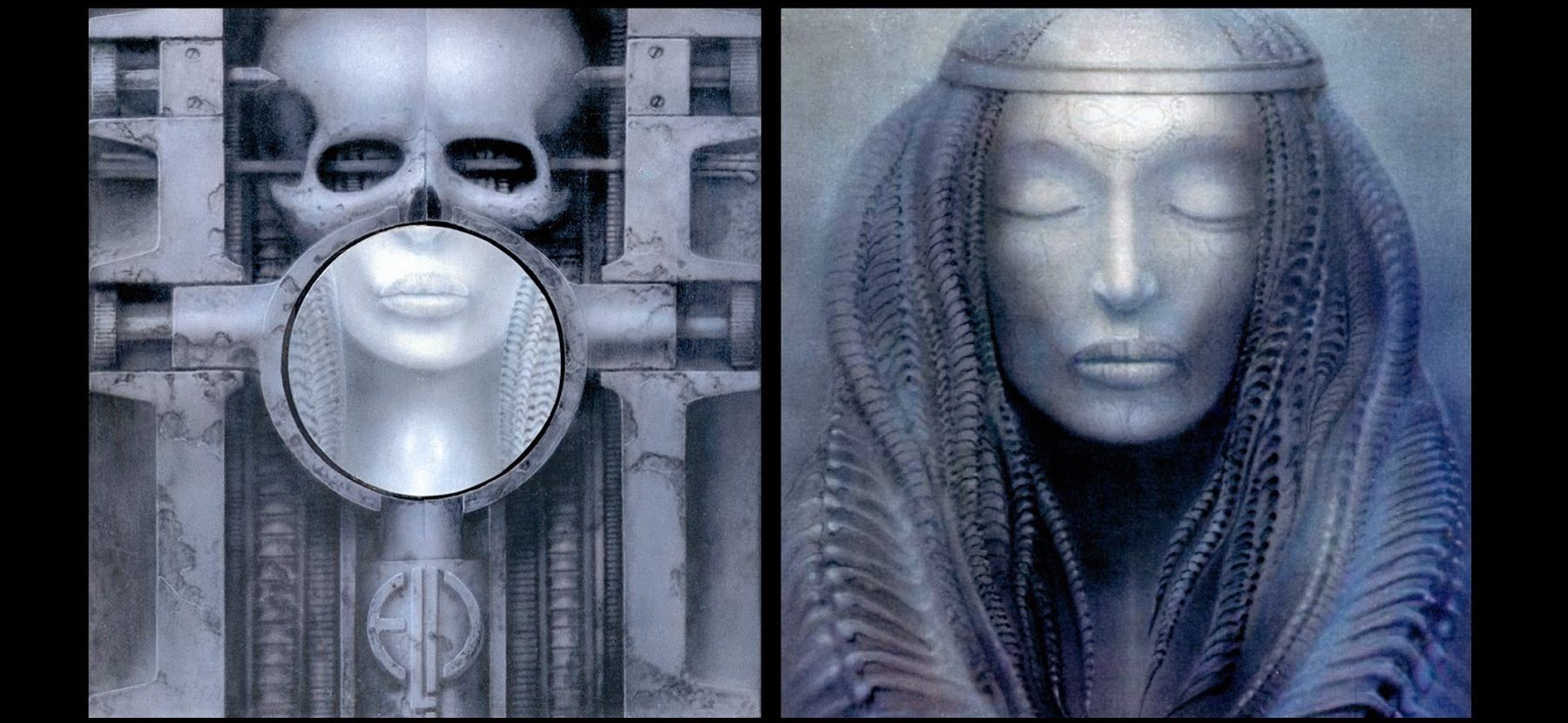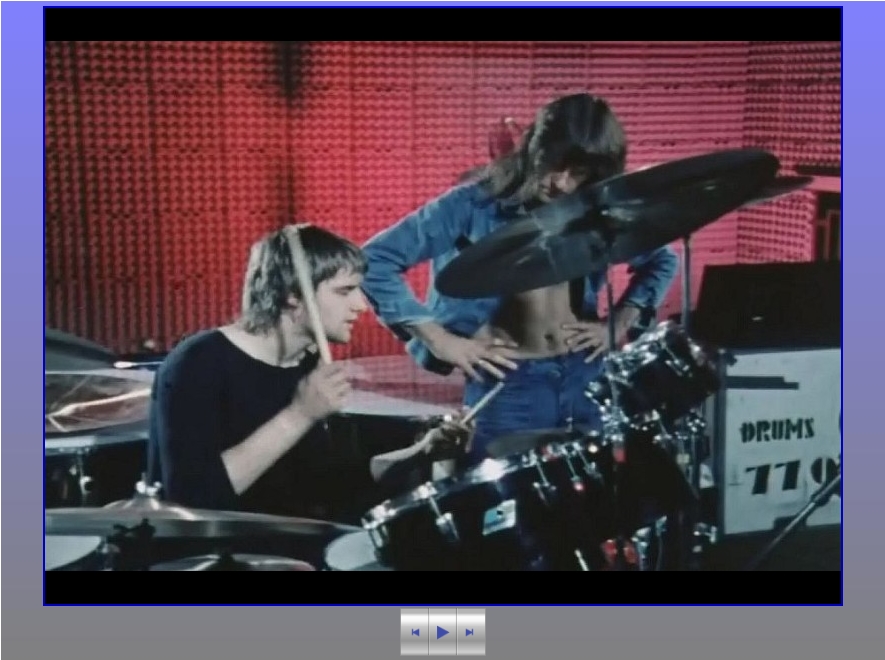Audio Program
The audio program streaming will be available after purchasing the article.
Download
The audio program download will be available after purchasing the article.
Welcome to the 10th edition of “Classic Choice”. Today we present: “Karn Evil 9” by Emerson Lake & Palmer.
Even though the audio program is reasonably self-sufficient, due to the nature of the detailed musical analyses I recommend that you take advantage of the support provided by the written version. That way you, will be able to go through the audio examples at your own pace while you read the corresponding explanations.
In the previous analysis, “The Lamb Lie Down on Broadway” we focused our attention on the rich variety of extra-musical elements that surround the work, and not so much on the music per se. As I explained, the reason for it is that, in spite of the fact that the music is among the finest that Genesis ever made, they developed pieces following simple song structures and also, except for the few examples noted, there was little development of common thematic material throughout the album.
In “Karn Evil 9” however, the situation is exactly the opposite. Although the concept and lyrics are worthy of some analysis, the music itself will center our attention.
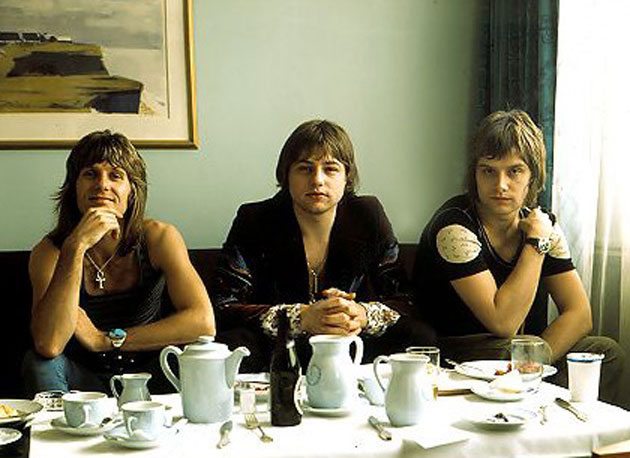
The History
But before diving into the music, let’s explore some of the circumstances around the development of “Karn Evil 9”. The album took over 600 hours to make and was recorded at London’s Advision Studios during August and September of 1973 (except Karn Evil 9 – 1st Impression recorded at London’s Olympic Studios in June).

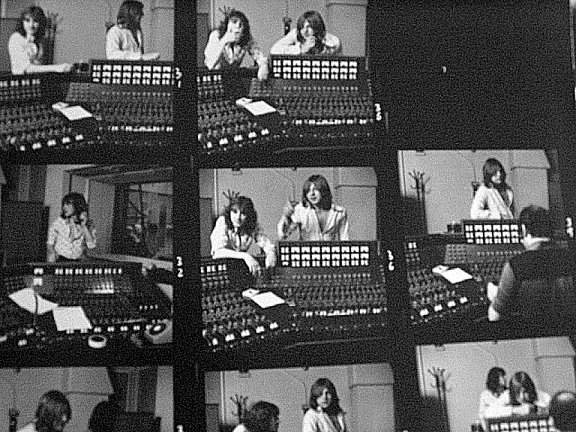
Greg Lake and Pete Sinfield at Advision Studios
This is a nice set of photos of the recording session of “Brain Salad Surgery”, taken from the recommended site www.brain-salad-surgery.de
This implies that there were quite a few work sessions of over 12 hours a day. Some critics said that this was a sign of a band that was running out of ideas. But quite the contrary, it was ELP at their creative peak, striving for perfection. It is also important to note that “Brain Salad Surgery” became the first album ELP released under their own label called “Manticore Records”. It also featured the first polyphonic synthesizer – a prototype Moog Apollo. So, this album was created at a peak moment in their lives from different perspectives: artistic, professional and economic. And it shows. Even the band members themselves recognized “Brain Salad Surgery” and “Karn Evil 9” in particular, as the zenith of their creative output:
Keith Emerson:
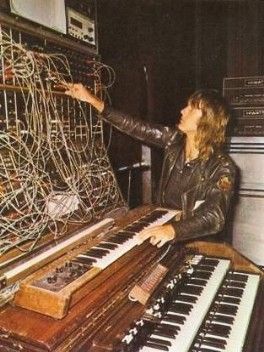
Carl Palmer:
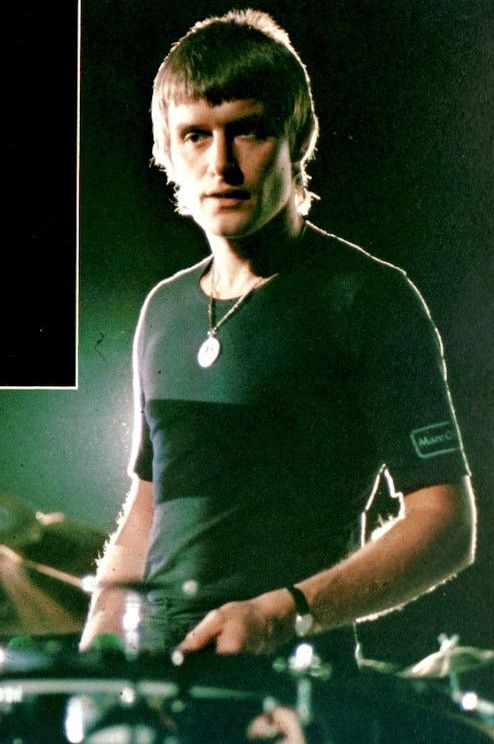
Greg Lake:
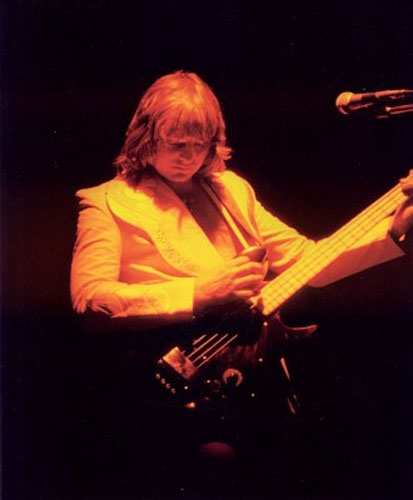
The phrases highlighted are key to the musical analysis that will follow.
The title of the album – Brain Salad Surgery – was probably taken from the lyrics of the song “Right Place, Wrong Time” by Dr. John, released also in 1973:
The Concept
From a conceptual point of view, “Brain Salad Surgery” again, as in “Tarkus”, revolves around the issue of “technology ethics” – the impact of technology in the evolution of human values. Quoting Edward Macan from his excellent book “Endless Enigma”:
As we can see, the questions posed by this conceptual album are even more pertinent today than 45 years ago when this album was released.
“Karn Evil 9” is a suite presented in three parts (I’m regarding parts 1 and 2 of 1st impression as a single piece). The “technological ethics” are approached from different perspectives in the outer movements, while the middle instrumental serves as a vehicle to carry the inertia of the 1st part, on to the 3rd.
The conceptual/narrative premise of “Karn Evil 9” is wonderfully described by Edward Macan. Allow me to quote a fragment from Chapter 9 from his book “Endless Enigma”:
This excellent description of the concept behind “Karn Evil 9” provides more than enough information to allow us to see this magnificent piece from a wider and richer perspective.
By the way, the name “Karn Evil 9” would appear to be a combination of two words that sound like “Carnival” and the 9 comes from Emerson’s original “Ganton 9” concept. Also note that Karn Evil matches the initials of Keith Emerson.
The number of movies, novels and series (Terminator, Matrix and Black Mirror, just to name a few) based on this subject that have appeared since the album’s release, reinforce my previous statement regarding the fact that the issues addressed in “Karn Evil 9” are not only pertinent nowadays, but even prophetic.
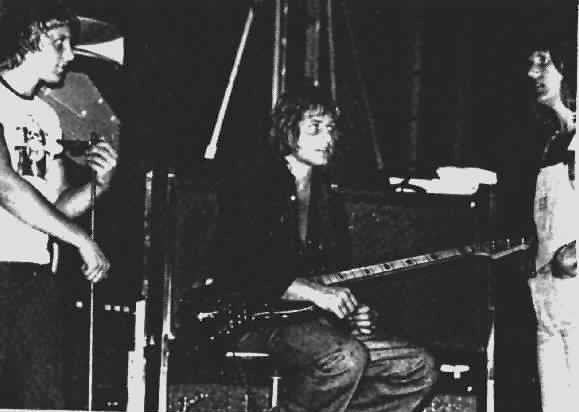
Album Cover
Before getting into the details of the music, let’s discuss the extraordinary album cover, which is always a strong contender when selecting the best rock album covers ever.
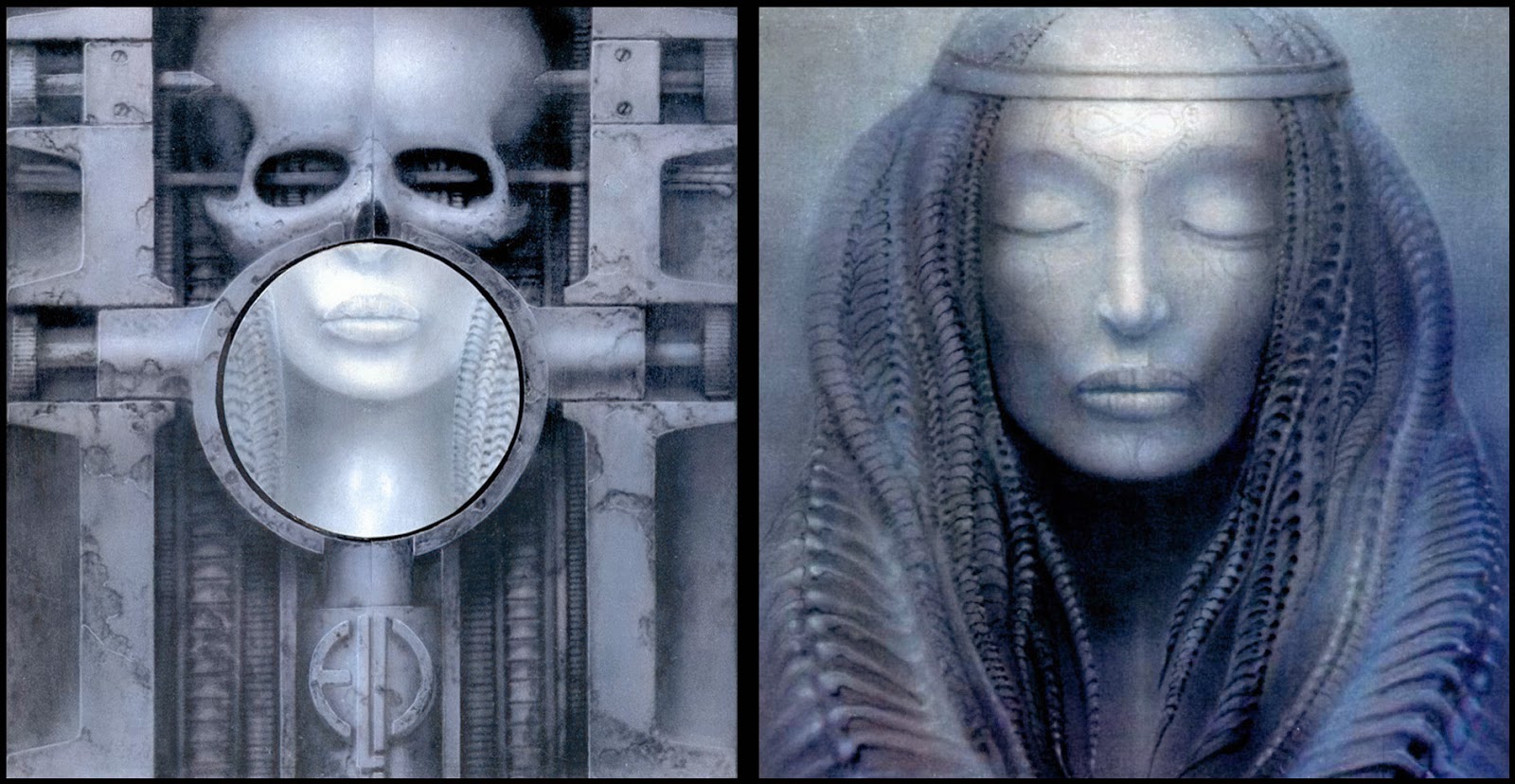
I took a couple of photos of the original booklet included in my 1973 vinyl copy of the album. This is the booklet folded. The meditative woman is replaced by Emerson, Lake and Palmer

When you unfold the booklet, you see on the lower side the full pictures of the band members and in the upper, the lyrics of the album
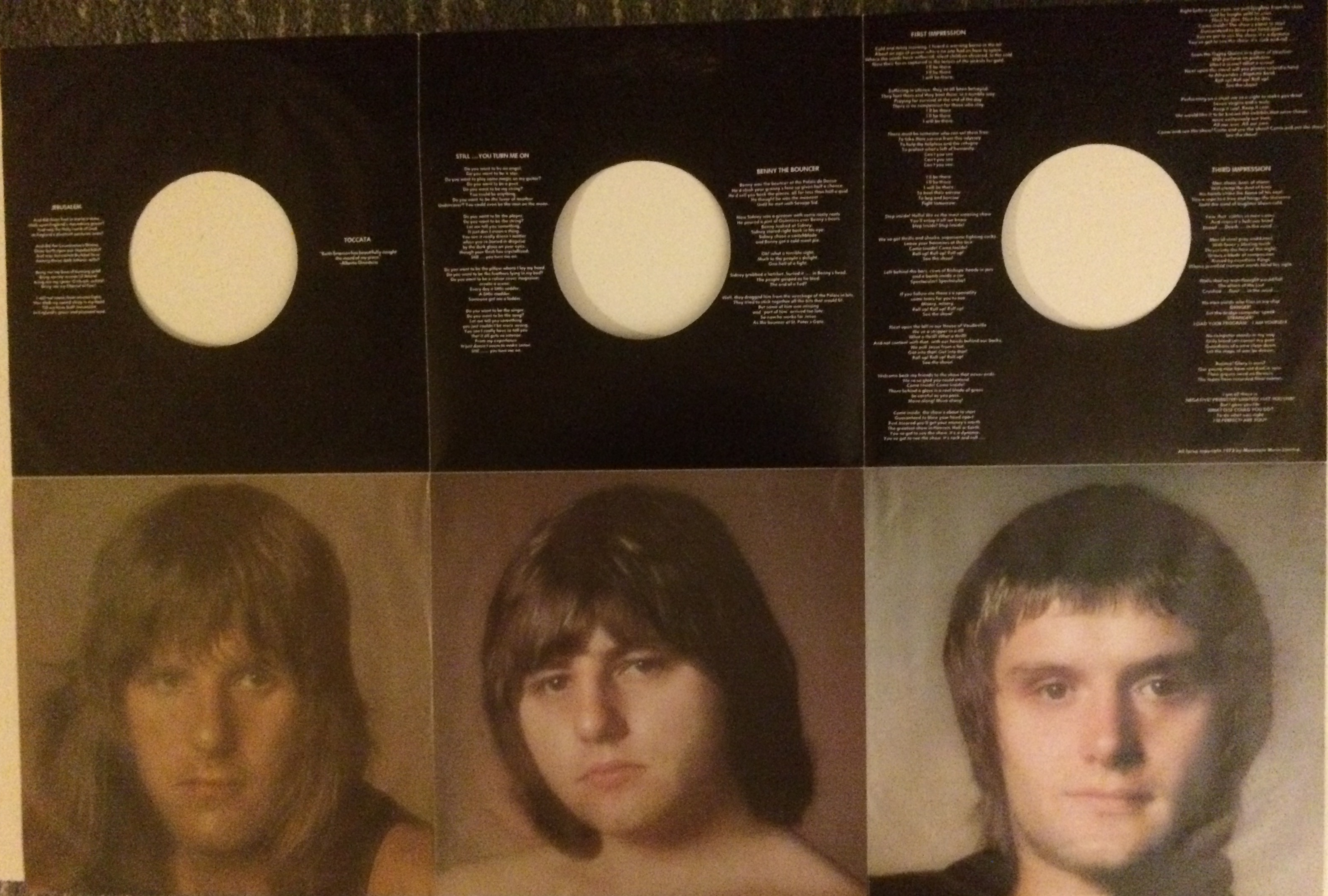
When ELP played in Zurich as part of their European tour in 1973, Emerson was introduced to a surrealist artist called H. R. Giger. He was relatively unknown at the time and later became famous for his participation in the film Alien. Emerson was really impressed:
In a relatively short amount of time, Giger was able to develop his impressive design. The layout is particularly effective in the original vinyl edition: at first sight, you can see a skull imprisoned by some sort of mechanical contraption, but the skull is not entirely deprived of flesh – an inner circle shows part of the skin from the nose down to the neck. The cover opens up in the middle. When you do, a woman seemingly in meditation or asleep, appears with the infinity symbol in her forehead. The woman’s hair would appear to be of some sort of biological reptile origin but if you look closely, you will see that they are formed of mechanical dreadlocks.
This fusion of biological and mechanical elements fit seamlessly into the plot of “Karn Evil 9”: The humanization of the “Man of Steel” in direct proportion to the dehumanization of mankind.
By the way, I think that the aesthetics of the woman’s hair is very similar to what Giger used in Alien.
I encourage you to visit this page, for a more detailed explanation of the process that led to the creation of the cover art and the famous ELP logo. In that article you will see that the two originals (the mechanical skull and the meditating woman) were stolen at an art exhibition in Prague in 2005. HR Giger offers $10.000 to whoever returns the paintings to him.
The Music
There is a key characteristic that affects this whole body of work. Let’s go back to Emerson and Lake comments. Emerson highlights the tighter interplay within the band and Lake remarks the fact that, for the first time, they were more concerned with harmony and melody instead of the technical aspects. If you look back to ELP’s previous albums, you will find that, as a general rule, the bass did not provide much to the overall construction of the harmonies. More often than not, the bass would double what Keith is doing with his left hand, or, just reinforcing a harmonic structure that was completely laid out by the keyboards. A very representative example is the beginning of “Tarkus”. Pay attention to the bass and the lower part of the keyboards.
Beginning of “Tarkus”
While there are many other examples where the bass is indeed supporting the harmony, it usually does so by playing the fundamental note of the chord and doing simple bass patterns. There are not many examples of the bass contributing to the harmonic texture while elaborating long melodies, as is the case with “Karn Evil 9”.
In “Karn Evil 9”, for the fist time, the bass gains full independence and becomes a crucial part of the harmonic structure. This is obvious by listening to the first few seconds of the suite. Listen to the intricate bass pattern, which is not doubled by the keyboard. If you take the bass part out, the whole harmonic foundation falls like a house of cards:
Beginning of “1st Impression”
There is another very relevant aspect that is applicable to the whole suite. It is very common to see how composers that are also excellent players contaminate their works with their virtuosity. Often, you see that their eagerness to show how well they play gets in the way of their creativity. This happens not only in progressive music but also in Classical Music and Jazz as well. In ELP, there are many examples of passages where Lake sits on a fixed harmonic pattern for several minutes, while Emerson performs all sorts of self-indulgent solos that are closer to a circus act than to a music piece. This does not happen in “Karn Evil 9”. There are a few cyclic harmonies with solos on top, but they are restrained and very efficient.
1st. Impression
Let’s take a closer look at the 1st Impression.
The form of this piece is an overarching ABB’, where “A” presents the voice of the “Liberator” and the 2 “B” sections feature the “Carnival barker”. The whole piece would not fit into side “A” of the vinyl, so it was spliced into two parts. However, as I already mentioned, there is no disruption in the musical discourse between parts one and two; in fact, several CD editions eliminate the fades in-out and present the 1st Impression as a continuous piece of music.
PART “A”
The structure of part “A” is based on three verses, each with a preceding instrumental section, a common chorus (I’ll be there, I’ll be there, I will be there), and a coda:
Intro – Verse 1 /Chorus – instrumental 1 – Verse 2 /Chorus – instrumental 2 – Verse 3/Chorus – Coda
As Emerson has pointed out, in “Karn Evil 9” counterpoint was used extensively. In fact, as Edward Macan states,
Intro
The intricate counterpoint texture is made itself evident from the beginning of the piece. See how the melody of the lower voice in the organ is handed over to the bass:
Counterpoint handed over by the organ, to the bass
Also, note that the organ presents a motive that will be used throughout Part “A”:
Organ motive
Verse 1 and Chorus
The vocal melody, is a very simple pattern of 2 alternating notes. However, Lake cleverly plays with the intonation and turns it into a sort of recitative. Without that intonation, the melody would have been extremely dull and boring. The “Liberator” speaks. Note that the organ motive is played between each of the verses:
Cold and misty morning, I heard a warning borne in the air
About an age of power where no one had an hour to spare,
Where the seeds have withered, silent children shivered, in the cold
Now their faces captured in the lenses of the jackals for gold.
I’ll be there
I’ll be there
I will be there.
Now try to dismiss the voice and center your attention on the instruments. The counterpoint, now handed over by the bass to the piano, draws a complicated figure full of dissonances while the organ plays an obsessive pattern that sounds like Morse code. Let’s listen again:
Obsessive organ chords (like some sort of Morse code)
I believe this pattern represents the machine, the “Man of Steel”. See how this pattern is repeated in the 3rd Impression in the instrumental section that precedes the climax of the Suite:
Obsessive repetition, repeated in 3rd Impression
In fact, these patterns based on obsessive repetitions of the same note or chord, which seem to represent machine codes, are present throughout the suite. Here are some examples:
“Machine Code” examples
Instrumental 1
This first instrumental section takes the organ motive from the Intro as a basis for further development, and ends with a repetition of the counterpoint voice in the bass. Note the tight interplay and the fact that
If you want to read the rest of the article, you need to buy it:
Resources
As shown by the multiple references throughout the analysis, the book “Endless Enigma” written by Edward Macan – Open Court Publishing Company, 2006 was an invaluable source for musical, historical and conceptual information. If you are really interested in ELP, and are ready to plunge into its more than 800 pages, then you should seriously consider acquiring this book. Just a word of warning: if you have little or no music knowledge you will have to skip the numerous musical analyses. It can be purchased here.
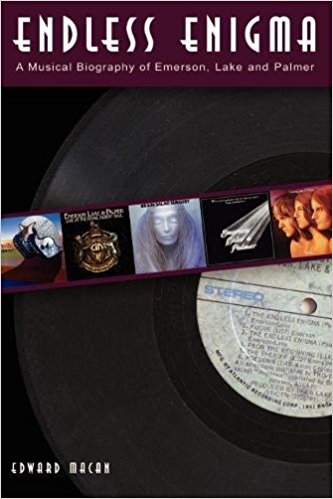
The site http://www.brain-salad-surgery.de/ proved to be an excellent source for facts and pictures. This site, specialized on “Brain Salad Surgery” is recommended for those who want more detailed information about the album.
This interesting video shows footage of the rehearsal sessions of “Brain Salad Surgery”. Note that, more than rehearsals, they were actually working on the generation of the arrangements:
Background Music
For this analysis we have featured two great albums released in 2017 from the Spanish projects “Last Knight” – their album “Talking to the Moon” (https://lastknight.bandcamp.com/album/talking-to-the-moon ) and “Tricantropus” – album “Scrum” (http://www.tricantropus.es)
In order of appearance:
- Moonwalking (Last Knight)
- Scrum (Tricantropus)
- Twilight (Last Knight)
- Sola (Tricantropus)
- Moonrider (Last Knight)
- Hojas Muertas (Tricantropus)
- In the Dark (Last Knight)
- Black Moon (Last Knight)
- El Año del Dragón (Tricantropus)
- The Nightmare (Last Knight)
This is the well-known video of Karn Evil 9 – 3rd Impression, from their performance at the 1974 California Jam:
Ever wondered how would Karn Evil 9 sound as a chamber piece? Well, listen to this superb arrangement of Karn Evil 9 – 1st Impression, Part 1 by the “Morgaua Quartet”:
And how about a Military Band arrangement?
And a Jazz band?

